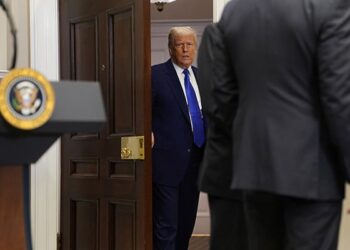The U.S.-India Trade Relationship: An Overview
The U.S. and India share a substantial trade relationship, characterized by significant exchanges in goods and services. This overview captures recent developments impacting this relationship, particularly in the context of trade tariffs and sectoral implications.
Recent Trade Tariff Developments
In recent months, the trade landscape has been significantly altered due to new tariff announcements by former U.S. President Donald Trump. These tariffs have sent waves of uncertainty throughout the global economy, prompting fears of a potential recession. For India, tariffs have risen to 26%, although certain sectors such as pharmaceuticals have enjoyed temporary exemptions.
Impact on Indian Pharmaceuticals
Despite the temporary reprieve, the Indian pharmaceutical sector is bracing for impending changes as tariffs on this industry are anticipated to be unveiled shortly. The uncertainties surrounding these tariffs have already triggered a decline in stock prices for major Indian pharmaceutical companies.
Key Industries at Risk
As the trade tariffs take hold, various sectors within India may face substantial challenges.
The Diamond and Jewelry Sector
One of the most vulnerable sectors to these tariff changes is India’s diamond and jewelry industry, which stands as one of the country’s primary export commodities to the U.S. The implications of increased tariffs could potentially damage this flourishing market.
Growing Optimism in Other Sectors
On the flip side, some analysts express a more optimistic viewpoint. They argue that the current trade tensions could create new opportunities for India in sectors like textiles, electronics, and machinery. With some manufacturers likely to relocate operations to India from other nations, these segments could see significant growth.
Competitive Tariff Landscape
It is notable that while India has imposed additional tariffs, these rates remain lower compared to some of its regional competitors. Countries like China (54%), Vietnam (46%), Thailand (36%), and Bangladesh (37%) have higher tariffs, presenting India with a unique advantage in attracting international businesses looking for cost-effective manufacturing solutions.
Trade Volume Between the U.S. and India
According to UN Comtrade data sourced from the Organization for Economic Cooperation and Development (OECD), the bilateral trade volume reveals substantial figures. In 2023, the U.S. imported $85.5 billion worth of goods from India, while India imported $41.4 billion worth of U.S. commodities. This robust exchange underscores the importance of the trade relationship between the two nations.
Major Export Categories from India to the U.S.
From India’s perspective, the primary exports include:
- Precious Stones and Jewelry: This category remains a significant contributor, accounting for a large percentage of India’s exports.
- Electronics: Another crucial sector that highlights India’s growing technological capabilities.
- Pharmaceutical Products: Although currently facing a tariff challenge, this remains vital for both countries.
Together, these sectors contribute around 40% of India’s exports to the U.S.
Key U.S. Exports to India
The U.S. too has significant exports to India, with the most valuable categories in 2023 being:
- Mineral Fuels and Oils: Valued at $13.6 billion, this category represents a substantial share of trade.
- Machinery and Mechanical Appliances: Accounting for $5.32 billion, this sector is key to the U.S. export portfolio.
- Precious Stones, Metals, and Pearls: At $2.41 billion, this category also plays an important role in the trade dynamics.
India’s Response to U.S. Tariffs
Despite the evolving scenario post-tariff imposition, India has so far refrained from announcing reciprocal tariffs on U.S. goods. This approach may reflect India’s strategy to mitigate further escalation of trade tensions while assessing the long-term impacts of the current situation.
The mutual dependencies between the two nations outweigh the immediate advantages of retaliatory measures. As both countries navigate the complexities of the global economic landscape, the focus remains on minimizing disruptions while exploring avenues for potential growth and collaboration in various sectors.
Through this insightful analysis, it becomes clear that while challenges abound, opportunities also present themselves, shaping the future of the U.S.-India trade relationship.






